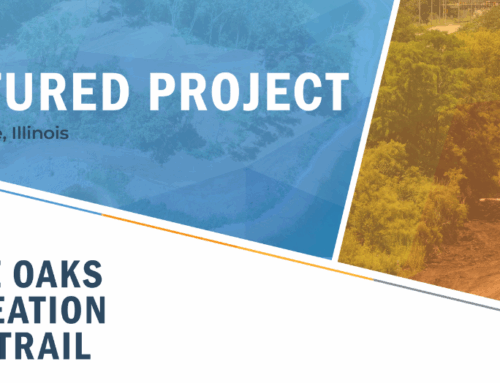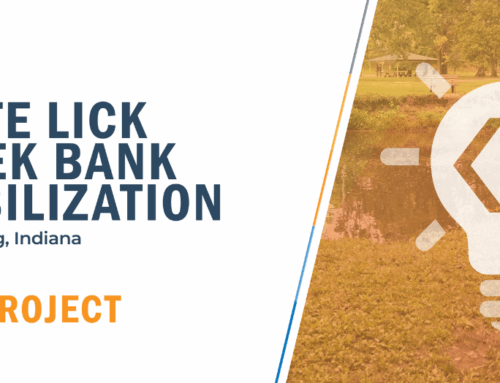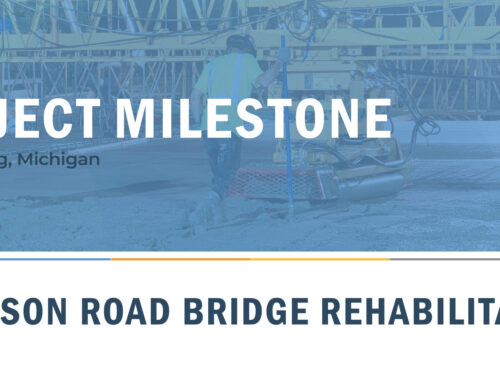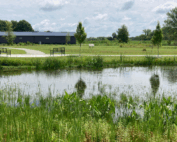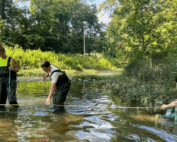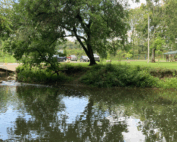If you’ve ever driven over black tubes laid across a road or noticed a small camera perched near an intersection, you’ve likely encountered a traffic count. While these tools may seem unremarkable, they’re quietly working to help engineers shape safer, smarter streets.
“People often think traffic counts are just about counting how many cars drive by,” said Thuyen Dang, Project/Design Manager and Transportation Engineer at Clark Dietz. “But we’re actually capturing so much more than that.”
What Are Traffic Counts?
Traffic counts can be defined as “…the process of recording the number of vehicles passing a given point during a specified period of time,” according to ScienceDirect. It also refers to the counting of cyclists and pedestrians across a roadway, not just vehicles. It is used to determine current roadway volume, and it is important in predicting how roadway changes will impact vehicle and pedestrian activity. It can also be referred to as traffic data collection.
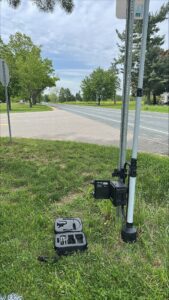
The Backbone of Smart Transportation Planning
Traffic data collection serves as a critical starting point for infrastructure improvements. It feeds data into traffic studies, helps agencies identify safety concerns, and guides decisions about intersection upgrades, pedestrian crossings, or redevelopment projects.
“We use this data to evaluate existing conditions, model future scenarios, and determine what improvements are needed, whether that’s a new signal, a turn lane, or an entirely redesigned intersection,” Thuyen said.
Clark Dietz has contributed traffic data to a wide range of planning efforts — from supporting Michigan’s statewide traffic database to studying the impacts of redeveloping shopping centers in Indiana. The firm also works with cities and universities that are reimagining how people move through their spaces, whether by car, bike, or foot.
“Traffic data collection is essential for effective transportation planning and design, and traffic studies,” said Leigh Burgess, PE, PTOE, Clark Dietz’s East Michigan Area Manager. “By gathering real-time data, we can generate valuable insights that guide the practical design of infrastructure improvements, improve traffic flow, and increase safety. It replaces assumptions with real data, helping engineers to make decisions based on actual conditions, leading to smarter and more sustainable transportation solutions.”
Tools of the Trade: Tube Counters and Miovision Cameras
Clark Dietz typically relies on two types of equipment for traffic counts: tube counters and Miovision cameras.
Tube Counters
Tube counters involve laying rubber tubes across roadways to detect axle hits. They’re simple, reliable, and great for capturing vehicle class and directional volume.
“We used them in a multi-year contract with MDOT to gather 48-hour directional counts across various sites,” Dang said. “That data feeds into MDOT’s public traffic count database, which helps both agencies and communities make better transportation decisions.”
Clark Dietz was also subcontracted for a corridor-level project on M-85, where tube counters were installed at five locations and Miovision cameras at six others to gather 24 hours of traffic data at each site. That effort combined high-resolution camera counts with traditional axle-based detection to give a full picture of travel behavior along the route.
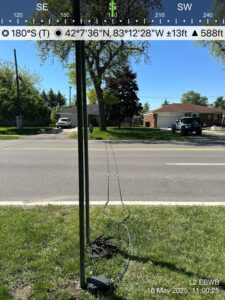
Miovision Cameras
When intersections are more complex or include pedestrian and bicycle activity, Miovision cameras are often the better tool. These high-definition video devices detect movements in multiple directions, across all modes of travel.
“We just mount the camera, let it record for a day or two, and then the software breaks down the data for us,” Thuyen said. “It’s especially helpful for places like university campuses where there’s a mix of vehicles, bikes, and pedestrians.”
In a recent project for Western Michigan University, the team installed them at 15 different locations to study multimodal traffic patterns. The resulting data is now helping the university and local planners assess how well the street system accommodates all users, not just cars.
Non-Motorized Data Collection for Safety
According to Thuyen, non-motorized or pedestrian counts are an essential part of the picture: “The main reason we focus on those counts is for safety and data collection, specifically, gathering information on pedestrian volume,” he explained.
That data can directly affect signal operations. “If there’s enough pedestrian traffic using a crosswalk, it can impact the signal timing,” Thuyen said. “In those cases, a push button isn’t needed because the regular signal cycle already includes sufficient time for pedestrians to cross safely.”
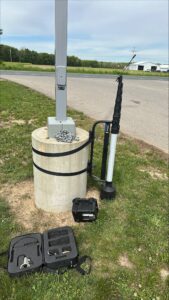
But in areas where pedestrian activity is low or more isolated, a push button may be installed. “In that case, the signal timing for the pedestrian phase won’t activate unless someone presses the button,” he added. “The system won’t register a walk signal unless a call is placed by pressing the button.”
Clark Dietz is fully capable of conducting both motorized and non-motorized counts across a variety of locations.
“We may need more equipment depending on the size of the study, but we do have the capability,” Thuyen said. “All of our cameras are equipped to collect both vehicle and pedestrian data.”
Non-motorized counts also support long-term planning for more walkable and bike-friendly communities. In a pilot project with Michigan State University, Clark Dietz supported the creation of the Bogue Bike Path, a dedicated bike lane developed to promote safer, more sustainable transportation on campus.
The team helped analyze existing pedestrian and cyclist traffic before the project and contributed to the planning of a trail designed for pilot testing. “MSU was trying to build a walking and biking environment,” Thuyen said. “So, we did a pilot study on that, and they test-ran the trail for several months. I believe they ended up keeping some of it in place.”
Projects like this demonstrate how pedestrian and cyclist data impact not only signal timing, but the broader design of healthier, more accessible spaces.
Supporting Redevelopment and Future Growth
Traffic counts also inform bigger-picture redevelopment efforts. In Mooresville, Indiana, Clark Dietz collected turning movement data at 10 key intersections as part of a comprehensive traffic study. The counts were used to analyze:

-
Current traffic patterns
-
A no-build (do-nothing) scenario
-
Alternative traffic impacts from a proposed shopping center redevelopment
“It’s a great example of how traffic counts can help communities understand what change might look like,” Thuyen said. “Before investing in redesigns or infrastructure, you need to know what’s already happening on the ground.”
Staying Safe in the Field
Traffic counting may not be glamorous, but it requires careful planning and a strong focus on safety.
“We always install tube counters in teams of two,” Dang said. “One person handles the equipment, the other serves as a lookout. And we avoid doing any installs during rain, because the tubes won’t stick properly.”
The Clark Dietz team also limits setup to off-peak hours whenever possible to minimize risk and disruption.
Small Devices, Big Impact
Whether installed on a rural highway, a suburban corridor, or a college campus, traffic counting devices deliver insights that shape the future of mobility. They may be small, but their influence is anything but.
“Traffic engineering starts with understanding what’s out there,” Dang said. “Without that, you’re just guessing.”
From long-term statewide contracts to one-day local studies, Clark Dietz’s traffic counting efforts form the foundation for thoughtful, data-driven planning.
Curious how our team is shaping the future of connected infrastructure? Dive into our latest blog on multimodal design, featuring the Bogue Street pilot project, and see how Clark Dietz is building smarter, safer, and more accessible communities.



